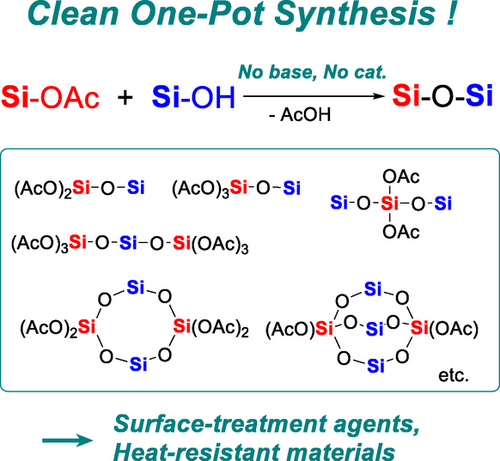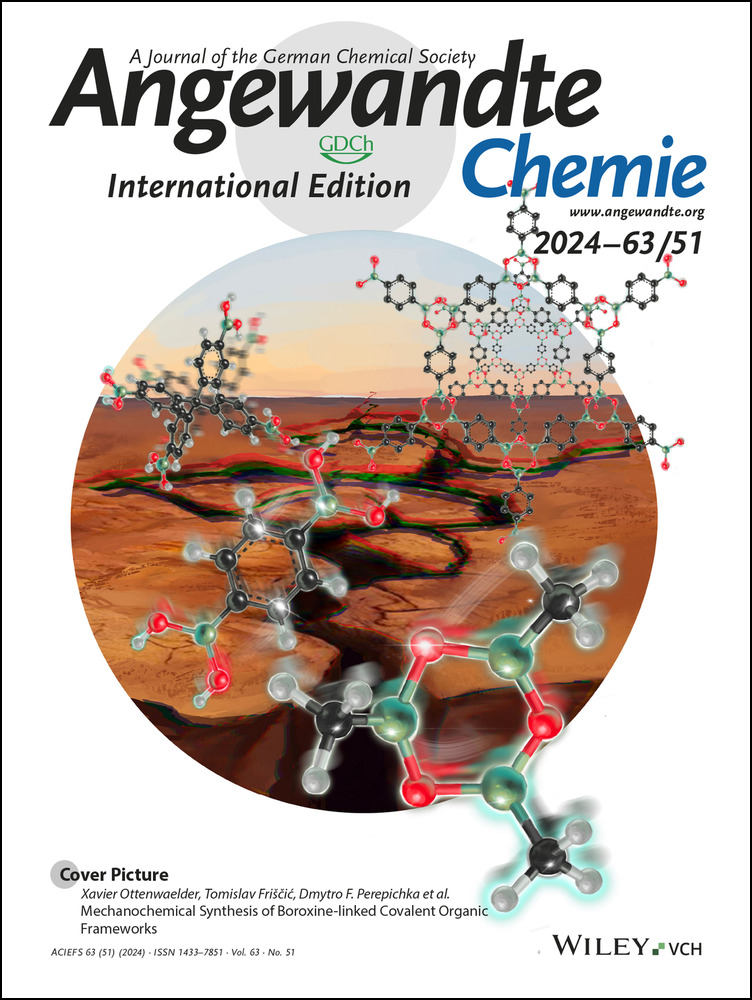A Clean One-Pot Synthesis of Structurally Ordered Linear, Monocyclic, and Bicyclic Oligosiloxanes
Graphical Abstract
Di-, tri-, and tetraacetoxysilanes reacted with silanols or silanediols under base- and catalyst-free conditions to selectively generate acetoxy-containing di- and trisiloxanes. Cyclotetrasiloxanes and bicyclic pentasiloxanes with precisely constructed structures were obtained from successive one-pot reactions of a tetraacetoxysilane with various silanediols. The acetoxy-containing oligosiloxanes can serve as efficient surface-treatment agents and as new building blocks for heat-resistant materials.
Abstract
A highly selective cross-coupling reaction between Si−OAc (AcO=acetoxy) and Si−OH compounds that generates unsymmetrical and symmetrical oligosiloxanes concurrent with the release of acetic acid has been developed. The high selectivity arises from the reactivity difference that depends on the varying number of acetoxy groups present, thus facilitating a clean one-pot synthesis of oligosiloxanes. For instance, the reactions of di-, tri-, or tetraacetoxysilanes with silanols furnish acetoxy-containing di- and trisiloxanes in high yield. Two equivalents of tetraacetoxysilane can react with various silanediols to form 1,1,1,3,3,3-hexaacetoxytrisiloxanes, which subsequently react with a second molecule of a silanediol to selectively afford 1,1,3,3-tetraacetoxycyclotetrasiloxanes. The cyclotetrasiloxanes further react with a third molecule of silanediol to provide unprecedented bicyclic pentasiloxanes with acetoxy groups at the bridgehead silicon atoms. Applications of the acetoxy-containing products as efficient surface-treatment agents and new building blocks for highly heat-resistant materials are demonstrated.
Open Research
Data Availability Statement
The data that support the findings of this study are available in the supplementary material of this article.





